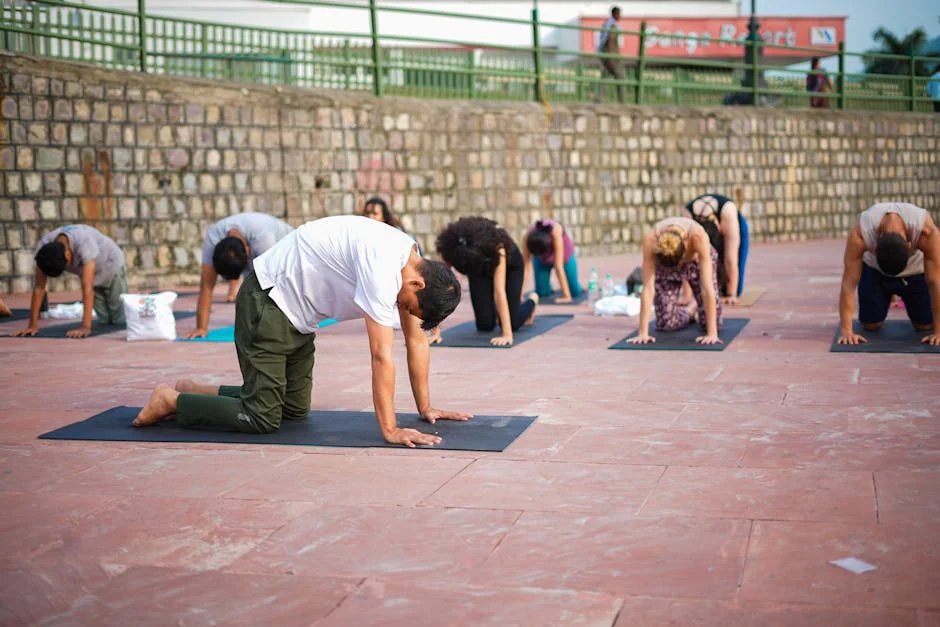In the quiet moments before you settle onto your cushion, a simple ritual can make all the difference. Imagine a warm, fragrant cup that does more than just hydrate—it actively prepares your mind and body for stillness. This is the essence of Yogi Relaxation Tea, a soothing blend crafted not just as a beverage, but as a powerful tool for tranquility. In our fast-paced world, finding that deep sense of calm can feel like a challenge, but what if the bridge to a more peaceful state was steeped in your favorite mug?
This guide is your companion to unlocking the full potential of that daily cup. We’ll journey beyond the tea bag to explore the calming alchemy of its herbs, uncover the proven benefits for your meditation practice, and show you how to transform your brewing routine into a profound mindfulness ritual. Get ready to discover how intentional sipping can lead to deeper focus, release physical tension, and finally quiet that racing mind. Let’s begin.
What is Yogi Relaxation Tea? More Than Just a Beverage
Yogi Relaxation Tea is a concept as much as it is a specific product. It represents a category of herbal blends intentionally formulated to support the nervous system and promote a state of calm. Unlike caffeinated black or green teas, these infusions rely on a symphony of botanicals known for their soothing properties. The goal is not just to enjoy a pleasant taste, but to use the act of drinking tea as a deliberate pause in your day—a signal to your body and mind that it's time to unwind.
For those in the meditation community, this tea becomes a sacred tool. It serves as a tangible transition from the busyness of daily life into a space of introspection and stillness. The warmth of the cup in your hands, the rising steam carrying earthy aromas—these are all part of a sensory experience that grounds you in the present moment before you even close your eyes to meditate to clear the mind. This tea is your ally, helping to build a consistent and supportive container for your practice.
The Calming Alchemy: A Look Inside Your Cup
The magic of any effective relaxation tea lies in its ingredients. These are not random herbs, but time-honored plants selected for their specific supportive qualities. Understanding what's in your cup empowers you and deepens your connection to the ritual.
Chamomile: The Classic Comfort Herb
Chamomile is perhaps the most well-known herb for relaxation. Its gentle, apple-like flavor is a familiar comfort. Science supports its traditional use, suggesting that compounds within chamomile, like apigenin, can bind to receptors in the brain, promoting relaxation and reducing anxiety. It’s the perfect base for any soothing blend, gently easing tension and preparing the mind for rest.
Lavender: The Scent of Serenity
Lavender contributes a distinctive floral aroma that is instantly calming. The scent alone is often used in aromatherapy to lower stress levels and combat insomnia. When ingested in a tea, lavender offers a dual-action approach: you smell its calming fragrance as you sip, and its gentle sedative properties work internally to quiet a restless nervous system.
Holy Basil (Tulsi): The Adaptogenic Ally
Holy Basil, also known as Tulsi, is a revered herb in Ayurvedic medicine. It's classified as an adaptogen, meaning it helps the body adapt to and resist the effects of physical and emotional stress. Tulsi doesn't force sedation; instead, it helps bring your system back into balance. It can gently lift your mood while simultaneously easing anxiety, making it an ideal component for a pre-meditation tea.
Licorice Root: The Sweet Harmonizer
Licorice root adds a natural, mild sweetness to the blend, reducing the need for added sugar. Beyond its flavor, licorice is known for its supportive role in adrenal function, which is crucial for how we handle stress. It helps to harmonize the other herbs, creating a smoother, more well-rounded effect and flavor profile.
Passionflower and Skullcap: The Nervous System Nurturers
These two powerful herbs are often found in deeper relaxation blends. Passionflower has been shown in studies to be as effective as some anti-anxiety medications for mild cases, promoting mental quietude. Skullcap is a nervine, meaning it directly supports and restores the nervous system, helping to ease physical manifestations of stress like muscle tension and restlessness.
5 Proven Benefits of Yogi Relaxation Tea for Meditators
Integrating a cup of relaxation tea into your routine offers tangible, practical benefits that directly enhance the quality of your meditation.
Quiets a Racing Mind Before Meditation. The most common hurdle to starting a meditation session is a busy brain. The calming herbs in this tea, particularly chamomile and passionflower, work to slow down the mental chatter. This makes it significantly easier to settle your attention on your breath or a mantra, rather than fighting against a torrent of thoughts. For those new to this, a guided meditation script for relaxation can provide the perfect structure to follow.
Soothes the Nervous System for Deeper Focus. Meditation requires a calm physiological state. When your body is still buzzing with stress hormones, sitting still is a battle. The adaptogenic and nervine properties of herbs like Holy Basil and Skullcap help down-regulate the nervous system from a state of 'fight-or-flight' to 'rest-and-digest,' allowing you to achieve a state of deeper, more focused calm.
Creates a Powerful Anchor for Mindfulness. The entire process—from brewing to sipping—is rich with sensory input. You can use the warmth of the mug on your palms as a meditation anchor. The taste on your tongue and the aroma in the air keep you firmly rooted in the present moment, turning tea drinking into a mindfulness practice in itself.
Eases Physical Tension for Comfortable Sitting. Stress doesn't just live in the mind; it tightens our shoulders, necks, and backs. This physical discomfort is a major distraction during meditation. The antispasmodic and muscle-relaxant properties of herbs like chamomile and lavender help to release this physical tension, allowing you to sit more comfortably and for longer periods.
Establishes a Consistent Pre-Meditation Ritual. Humans are creatures of habit. By consistently having a cup of relaxation tea before you meditate, you create a powerful psychological trigger. Your mind and body begin to associate the taste and ritual of the tea with the impending quiet of meditation. This makes it easier to transition into your practice, building a stronger, more consistent habit over time. If you're unsure where to start, you can learn how to meditate for free to build this powerful habit.
Brewing Your Perfect Cup: A Mindfulness Ritual in Itself
Brewing your Yogi Relaxation Tea should never be a rushed task. This is where the mindfulness begins. Transform this simple act into a sacred ritual.
Start with Intention. As you fill your kettle, set a gentle intention for your practice. It could be as simple as "I am creating space for peace" or "I open myself to stillness."
Engage Your Senses. Listen to the sound of the water coming to a boil. Notice the steam rising as you pour the hot water over the tea bag. Inhale the deep, herbal aroma that is released. Watch as the water slowly transforms color. Be fully present for each step.
Honor the Steep. Cover your cup and let the tea steep for the full recommended time, usually 7-10 minutes for a strong, full-bodied infusion. This waiting period is a mini-meditation in patience and anticipation. Avoid the temptation to multitask. Simply be with the process.
Remove the Bag Mindfully. When the time is up, slowly remove the tea bag, noticing the weight and the scent. Place it on a saucer with awareness. This act symbolizes the completion of one phase and the beginning of another.
Integrating Your Tea into a Powerful Meditation Practice
Now that your tea is brewed, it's time to seamlessly weave it into your meditation. This integrated approach creates a powerful, end-to-end practice for deep relaxation.
Step 1: The Intentional Preparation
Carry out the brewing ritual described above. Let every action be slow and deliberate. Your focus should remain entirely on the process, letting go of any other thoughts or plans for the day.
Step 2: The Mindful Sipping
Find a quiet seat. Hold the warm cup in both hands. Before you take a sip, simply feel its warmth seeping into your palms. Take your first sip. Let the liquid rest in your mouth for a moment, fully experiencing the flavor. Feel the warmth travel down your throat and into your stomach. Continue to sip in this way, with your entire attention on the sensory experience of drinking.
Step 3: Transitioning to Silence
As you near the bottom of your cup, allow the space between sips to grow longer. Close your eyes and notice the lingering taste and the feeling of warmth within your body. Let this internal warmth become the bridge from the active ritual of drinking to the silent practice of meditation.
Step 4: Using the Warmth as a Meditation Anchor
Once your cup is empty, set it aside gently. Close your eyes and bring your awareness directly to the physical sensation of warmth in your core. Use this sensation as your primary anchor for meditation. When your mind wanders, gently guide it back to the feeling of warmth and comfort radiating from your stomach. This provides a tangible, soothing focal point that can lead to remarkably deep states of relaxation.
Beyond the Tea Bag: Deepening Your Practice
Your relationship with calm doesn't have to end when the tea is gone. Think of Yogi Relaxation Tea as the cornerstone of a larger, holistic approach to tranquility.
Consider pairing your tea ritual with other calming activities. You might sip your tea while doing five minutes of gentle, restorative yoga poses to release physical tension, or explore techniques from Qiang relaxation for achieving mind-body harmony. Alternatively, you could enjoy your cup while journaling or reading an inspirational text to quiet your mind before sitting. The key is consistency and intention.
Listen to your body. Some days you may need a stronger, longer-steeped cup, while on other days a lighter brew will suffice. Your meditation practice, like your need for relaxation, is not monolithic. It changes daily. Your tea ritual can be a flexible, responsive tool that helps you meet yourself exactly where you are, creating a sustainable path toward lasting peace and mindfulness.
In a world that often prizes relentless productivity, the ritual of preparing and enjoying Yogi Relaxation Tea offers a powerful, accessible antidote to daily stress. This journey through its calming blend of herbs like chamomile, lavender, and valerian root underscores that true relaxation is not a luxury, but a vital component of holistic well-being. The key takeaway is clear: by mindfully integrating this tea into your daily routine, you are making a conscious choice to pause, breathe, and nourish your nervous system. This simple act is a profound step toward reclaiming tranquility and building emotional resilience. Let your next cup be more than just a beverage; let it be a gentle reminder to prioritize your peace. Embrace this moment of quiet self-care, and carry its soothing benefits with you long after the final sip. You have the power to cultivate calm, one comforting cup at a time.



